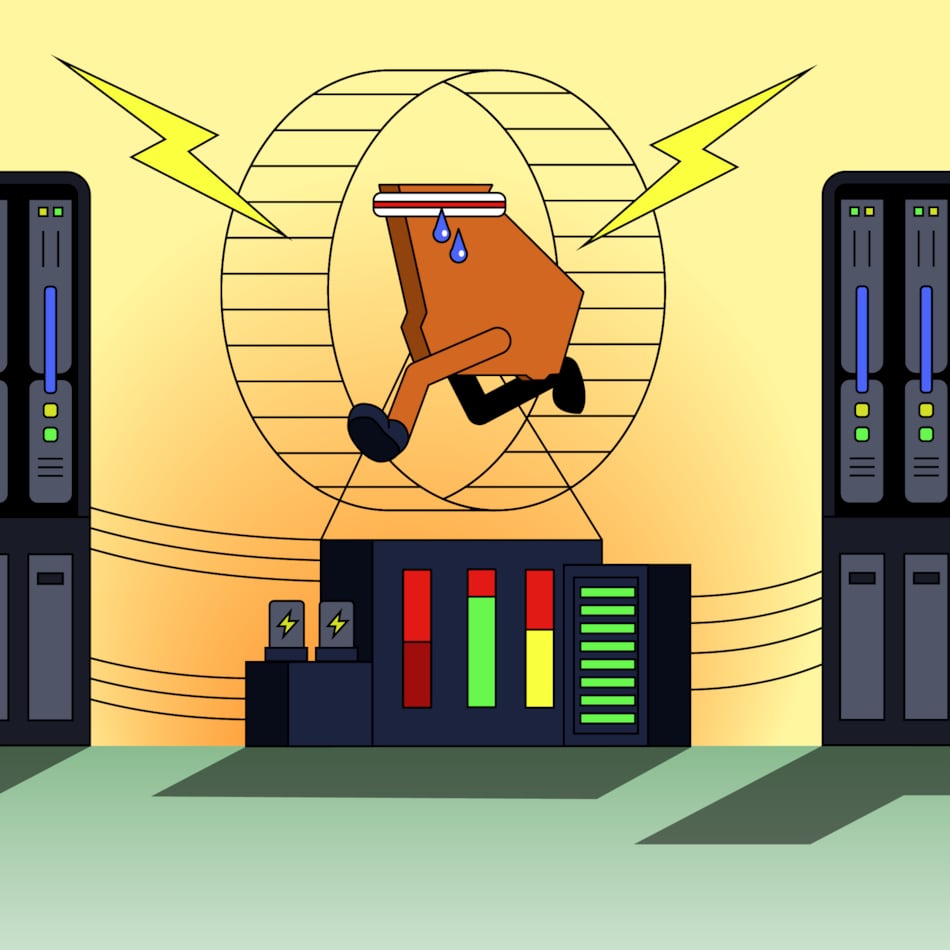DEIR AL-BALAH, Gaza Strip (AP) — Israel struck southern Gaza ’s main hospital with a missile and then fired another as journalists and rescue workers rushed to the scene, killing at least 20 people, local health workers said Monday.
The first strike hit a top floor of a building at Nasser Hospital in Khan Younis. Minutes later, as journalists and rescuers in orange vests rushed up an external staircase, a second missile hit the same spot, said Dr. Ahmed al-Farra, head of Nasser’s pediatrics department.
Among those killed was 33-year-old Mariam Dagga, a visual journalist who had worked for The Associated Press. Dagga regularly reported for multiple outlets from the hospital, including a recent story for the AP on doctors struggling to save children from starvation.
Al Jazeera and Reuters confirmed their journalists and freelancers were among the five journalists killed.
The Israeli military confirmed in a statement that it had struck targets in the area of the hospital. It said it would conduct an investigation and “regrets any harm to uninvolved individuals and does not target journalists as such.”
Israel has attacked hospitals multiple times throughout 22 months of war, asserting that Hamas embeds itself in and around the facilities, though it rarely provides evidence. Hamas security personnel have been seen inside such facilities over the course of the war, and parts of them have been off limits to reporters and the public.
The hospitals that remain open have been overwhelmed by the dead, wounded and now by increasing numbers of malnourished as parts of Gaza are now in famine.
Palestinians are bracing for an expected Israeli offensive into Gaza City, the territory's most populated area with hundreds of thousands of people, many of them displaced.
A doctor describes ‘chaos, disbelief, and fear’
The first Israeli strike at around 10:10 a.m. hit the hospital’s fourth floor, which has surgical operating rooms and doctor’s residences, killing at least two people, said Zaher al-Waheidi, head of the records department at the Gaza Health Ministry.
The second strike on the stairwell killed 17 others, including medical teams, rescuers, journalists and others, al-Waheidi told the AP.
Journalists often used the external staircase as a location for live TV spots and to pick up an internet signal.
A British doctor working on the floor that was hit said the second strike came before people could start evacuating from the first.
“Just absolute scenes of chaos, disbelief and fear,” the doctor said. They described people wounded from the strikes entering the ward and leaving trails of blood. The hospital was already overwhelmed, with patients with IV drips lying on the floor in the corridors in stifling heat.
The doctor spoke on condition of anonymity in line with regulations from their organization to avoid reprisals from Israeli authorities. “It leaves me in another state of shock that hospitals can be a target,” the doctor said. “You go to work as a healthcare professional, and you should be protected in the place you work. But you are not."
Nasser Hospital has withstood raids and bombardment during the war, with officials repeatedly noting critical shortages of supplies and staff.
A June strike on the hospital killed three people, according to the Health Ministry. The military said at the time that it targeted a Hamas command and control center. A March strike on its surgical unit days after Israel ended a ceasefire killed a Hamas official and a 16-year-old boy.
Prime Minister Benjamin Netanyahu’s office did not immediately respond to questions about the airstrikes. They came four days after the Israeli military's Arabic spokesperson urged health officials to evacuate patients from northern Gaza to facilities in the south ahead of Israel's offensive in Gaza City.
More Palestinians killed while seeking aid
Al-Awda Hospital said Israeli gunfire killed six aid-seekers trying to reach a distribution point in central Gaza, and another 15 were wounded.
The shootings were the latest in the Netzarim Corridor, a military zone where U.N. convoys have been overrun by looters and desperate crowds, and where people have been shot and killed while heading to sites run by the Gaza Humanitarian Foundation, an Israeli-backed American contractor.
Neither Israel's military nor GHF immediately responded to questions about the aid-seekers, who the hospital said were killed hundreds of meters (yards) from the distribution point.
Meanwhile, three Palestinians, including a child, were killed in a strike on a neighborhood in Gaza City, Shifa Hospital said.
One of the deadliest wars for journalists
The war in Gaza has been one of the bloodiest for media workers, with 192 journalists killed, according to the Committee to Protect Journalists. More than 1,500 health workers have also been killed, according to the U.N.
The health ministry said Sunday that at least 62,686 Palestinians have been killed in the war. It does not distinguish between fighters and civilians but says around half have been women and children. The ministry is part of the Hamas-run government and staffed by medical professionals. The U.N. and independent experts consider it the most reliable source on war casualties. Israel disputes its figures but has not provided its own.
The war began when Hamas-led militants abducted 251 people and killed around 1,200 people, mostly civilians, in the Oct. 7, 2023, attack. Most of the hostages have been released in ceasefires or other deals but 50 remain in Gaza, with around 20 believed to be alive.
Hostages’ families fear a new offensive will endanger them further, and many Israelis are increasingly vocal about the need for a deal to stop the fighting and bring everyone home. A new call-up of reservists has added to the anxiety.
___
This story has been corrected to note that Israel has provided some evidence of militants operating in and around some of the hospitals it has raided.
___
Magdy reported from Cairo, and Metz reported from Jerusalem. Associated Press Writer Melanie Lidman contributed from Jerusalem.
___
Follow AP’s war coverage at https://apnews.com/hub/israel-hamas-war
The Latest
Featured


